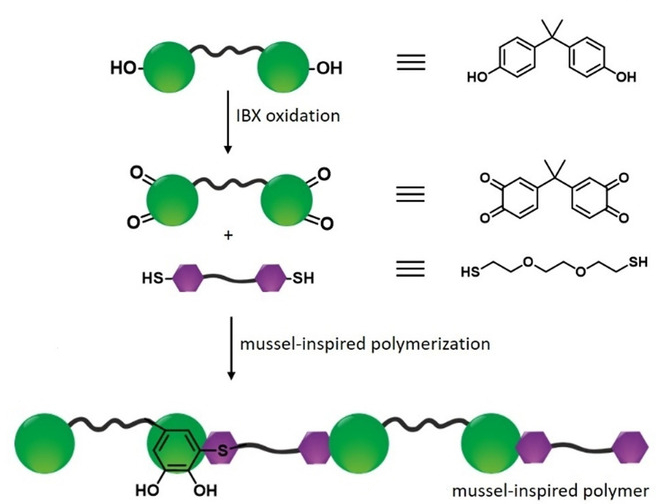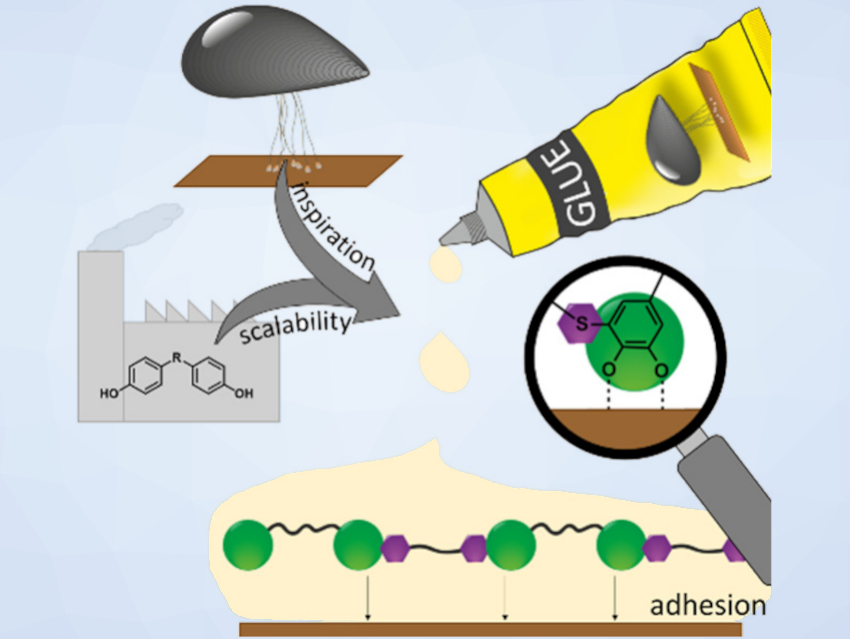Mussels and other marine invertebrates can have impressive adhesion capabilities under wet conditions. They can stick to surfaces in scenarios where even optimized synthetic glues often fail. Within the glue proteins of marine mussels, the amino acid building block L-3,4-dihydroxyphenylalanin (L-DOPA) with its catechol unit plays a key role in adhesion. The glue proteins allow mussels to cope with wave forces and high salt concentrations. L-Dopa and synthetic catechol analogues have been used to create a variety of mussel‐inspired polymers with uses, e.g., in adhesives or surface coatings.
Hans G. Börner and Jana M. Krüger, Humboldt University of Berlin, Germany, have used a mussel‐inspired polymerization (MIPoly) to synthesize a class of fully synthetic adhesive polymers. The team used a Michael-type polyaddition of synthetic bisquinones with dithiols to produce polymers with adhesive thiol–catechol connectivities (TCC, pictured below). The bisquinones can be readily synthesized from commercially available bisphenol monomers by oxidation with 2-iodoxybenzoic acid (IBX).

The polymerization technique was used to synthesize a library of different TCC polymers with dry adhesive properties capable of gluing poly(propylene) more effectively than commercial epoxy resins. A candidate called p(BQZ-EDET) (BQZ = bisquinone Z, EDET = 2,2′‐(ethylenedioxy)diethanethiol) also showed good wet adhesion capabilities on aluminum in sea-water-like conditions. Since the monomer precursors are available on a multi-ton scale, the researchers believe that scale-up is feasible. This could, in turn, lead to the development of a class of new adhesives.
- Accessing the Next Generation of Synthetic Mussel-Glue Polymers via Mussel-Inspired Polymerization,
Jana M. Krüger, Hans G. Börner,
Angew. Chem. Int. Ed. 2021, 60, 6408–6413.
https://doi.org/10.1002/anie.202015833





Can you please tell me where I can buy Mussel glue?